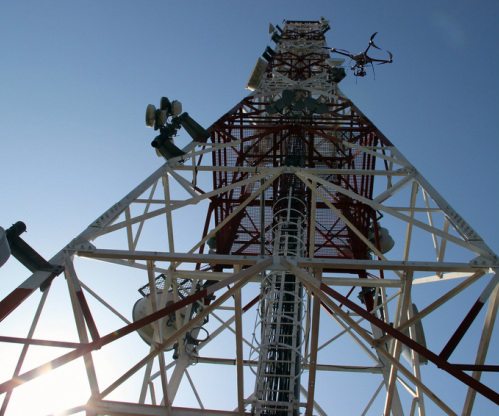In a vote split along party lines, the Federal Communications Commission continued its press to minimize local barriers to network deployment by allowing excavation and deployment of equipment up to 30 feet beyond a site boundary without triggering additional review.
Republican commission members framed the change as an administrative one that provides consistency across various federal review types and “balances” local review with the desire for speedier, more streamlined network deployment and co-location, particularly for 5G networks. The two Democratic commissioners noted the outcry from cities and counties at the preemption of local control over cell sites and land use and said that the change doesn’t stand up to scrutiny and harms federal and local relationships.
The FCC’s order declares that “ground excavation or deployment of up to 30 feet in any direction outside a tower’s site is sufficiently modest so as not to ‘substantially change the physical dimensions’ of a tower or base station.”
Telecom infrastructure companies and carriers supported the rule change, while opposition came from state and municipal organizations and individual cities, including the National Association of Telecommunications Officers and Advisors, the National League of Cities and similar organizations for counties, towns and townships, as well as the U.S. Conference of Mayors.
According to the order, the Wireless Infrastructure Association filed a petition asking for such rule changes back in the fall of 2019, both in terms of how to define a “site” and its boundaries and asking that the FCC amend its rules to establish that a “modification to a site would not cause a ‘substantial change’ if it entails excavation or deployments at locations of up to 30 feet in any direction outside the boundaries of a tower compound.” Section 6409(a) of the Spectrum Act requires state and local governments to approve requests for collocation, removal, or replacement of transmission equipment that “do not substantially change the physical dimensions of a tower or base station.” The FCC adopted rules implementing that section in 2014, but an agreement between the FCC and the National Conference of State Historic Preservation Officers and the Advisory Council on Historic Preservation was amended earlier this year to say that some co-location and excavation should be allowed, up to 30 feet beyond a site’s boundary, without triggering additional federal historic review. “It is logical that this same threshold should apply as a benchmark for exempting expansions from substantial review by state and local government,” said Chairman Ajit Pai. “Our decision streamlines the processing of more modifications that don’t substantially change the physical dimensions of a tower. And given the increasing reliance upon collocations as the most economical and environmentally friendly method for expanding 5G wireless networks, our Order today advances the Commission’s goal of facilitating the rapid development of 5G wireless infrastructure without infringing upon local land-use interests.”
WIA President and CEO Jonathan Adelstein praised the FCC’s action, saying that it “reduces barriers for sensible, limited expansions to existing tower sites, which should be the easiest work to get approved. The FCC’s action will immediately begin promoting collocation for 5G and public safety equipment like new competitors, edge data centers, small cell hubs, and emergency generators that have negligible environmental impact.” In an ex parte comment, Adelstein said that “Thirty feet is a small amount of space to expand, but it will have a big impact for our nation’s 5G upgrades.”
In a statement, Republican Commissioner Brendan Carr said that the change was “another significant step in our broader effort to modernize wireless infrastructure” that allows 30 feet of site expansion “consistently across our environmental, historic preservation, and local approval rules” and noted that it will help to accommodate additional equipment to support scenarios such as the 72 hours of backup power that FirstNet is requiring at cell sites across the country.
Outgoing Republican Commission Michael O’Rielly said that a common problem for providers has been obtaining approvals for expansion of accompanying equipment on the ground when they want to co-locate equipment on a tower. “Whether it be for equipment cabinets or generators for backup power, long approval processes were being required to expand compounds on land already zoned for this very use. It amazes me how some can argue against today’s action while repeatedly calling for – and sometimes criticizing – the need for greater resiliency, expansion of networks, and the deployment of FirstNet’s system. Not to mention, most recognize that the deployment of 5G will require more equipment to be placed within these compounds,” O’Rielly said.
“It stretches credulity to suggest that excavation or deployment of up to 30 feet outside the boundaries of a tower compound does not ‘substantially change the physical dimensions’ of that site,” argued Commissioner Jessica Rosenworcel, a Democrat, going on to add, “The Federal Communications Commission used to acknowledge this, too. When the agency first interpreted Section 6409 in 2014, it concluded that excavation outside the current site of a tower was a substantial change. That didn’t mean that a wireless provider could not expand an existing site—it simply meant that those applications would be approved in the normal course, subject to regular state and local review. … When we proceed like this, we create genuinely unhelpful friction between state and local interests who have filed en masse in this proceeding to protest how this agency is diminishing their authority. … We reduce the opportunity to foster the kind of partnerships between providers and state and local authorities that can help build smart cities—where connectivity will help improve the quality of life.”
Commissioner Geoffrey Starks, also a Democrat, joined Rosenworcel in dissent, saying that the decision “could encourage applicants to evade local zoning regulations by seeking initial approval for less space than they actually need and then obtaining streamlined processing for expansions beyond that area. Such expansions could lead to serious public safety issues. … While streamlining rules and flexibility can be helpful and sometimes necessary, we must not do so at the expense of state and local governments that are already overburdened.”

